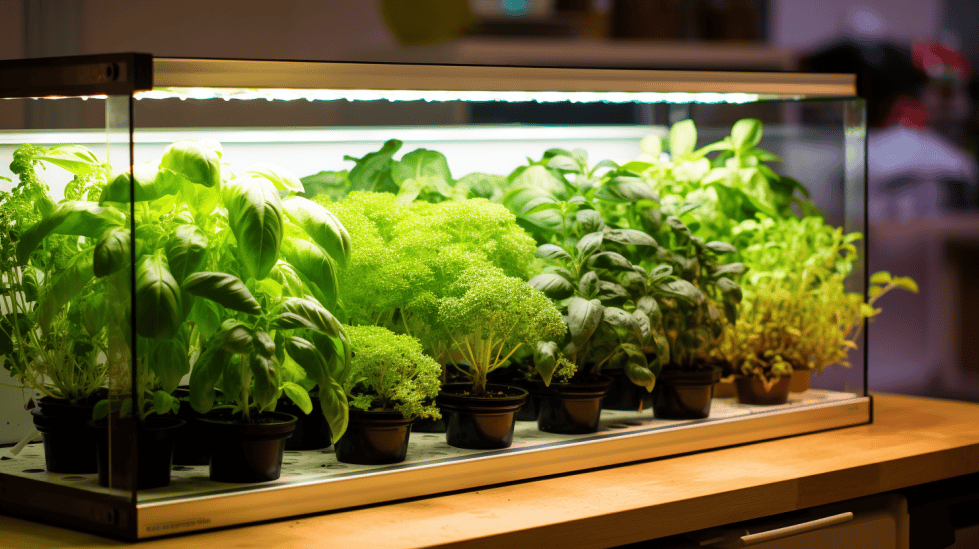Best Light for Growing Herbs Indoors
Growing herbs indoors can be a rewarding and fulfilling hobby for plant enthusiasts and cooks alike. Not only do they bring life and aroma to any space, but they also allow you to harvest fresh, fragrant herbs that can be used to enhance your favorite meals. However, not all indoor lighting conditions are optimal for herb growth, which is why it’s essential to choose the right grow light to ensure successful cultivation.
One of the critical factors to consider when growing herbs indoors is understanding the plants’ specific light requirements. The amount and type of light your herbs receive will have a significant impact on their growth and overall health. By investing in the best grow light for your indoor herbs, you’re setting yourself up for success and ensuring a thriving herb garden all year round. With the countless options available on the market, selecting the most suitable grow light can be a daunting task – but fear not, as our article will assist you in making an informed decision.
Key Takeaways
- Proper lighting is crucial for successful indoor herb growth
- Understand your herbs’ specific light requirements for optimal cultivation
- Assess and compare various grow light options to find the best fit for your indoor garden
Essentials of Indoor Herb Growing
As a gardening enthusiast, I always find indoor herb gardening a fulfilling way to make the most of limited spaces and grow fresh supplies year-round. To ensure the success of my indoor herb garden, I’ve learned the crucial factors to consider, such as lighting, location, and watering.
Choosing the right light for my indoor herbs has proven to be of utmost importance. Most herbs, like basil, parsley, and rosemary, thrive in full sun. In my experience, providing around 6-8 hours of direct sunlight works best. In my indoor space, I typically place my herbs by the sunniest window available, preferably facing south or southwest. When natural light isn’t sufficient, I use an LED grow light to supplement and maintain the 12-14 hours of light they require.
Young plants, especially, benefit from proper light management as they develop. As I’ve grown different herbs over the years, I’ve noticed that their flavors become more intense when they receive plenty of light. In some cases, I’ve adjusted my setup to suit the individual light requirements of my herbs by using LED lights with specific lumens per square foot for optimal growth.
Location is another essential aspect of my indoor herb garden. Selecting the best indoor space for my herbs means considering temperature, humidity, and access to natural light. Small spaces can work effectively if carefully planned. I’ve made the most of my available area by using different types of containers or investing in indoor garden kits tailored for herb cultivation.
Lastly, watering plays a critical role in the health and growth of my indoor herbs. I’ve learned that maintaining consistent soil moisture, without over-watering, is crucial. It can be surprising how little water it takes to sustain a small herb, so I always pay attention to the signs, such as yellowing or wilting leaves, to adjust my watering habits accordingly.
Focusing on these essentials has allowed me to successfully grow a variety of herbs in my indoor garden, creating a soothing environment and readily available fresh herbs for my culinary needs.
Understanding Light Requirements
Natural Light vs. Artificial Light
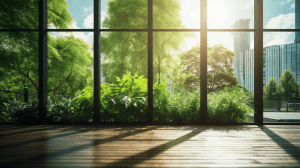
When growing herbs indoors, I need to consider the type of light my plants receive. Natural light from windows can sometimes be enough for certain herbs, but it may not always provide adequate light conditions. In instances where natural light is insufficient, I can turn to artificial lighting options, such as grow lights or fluorescent bulbs, to supplement my herb plants’ needs.
Intensity and Spectrum of Light
In order to ensure my indoor herbs thrive, I need to consider the intensity and spectrum of light they are provided. Blue light, ranging from 450 nm to 495 nm, is essential for promoting chlorophyll formation and supporting healthy foliage growth. Blue light is found in high proportions in sunlight and also in some indoor grow light systems. Intensity of the light plays a role in how much energy the plants absorb, which can impact their overall growth and health.
Another important aspect of light spectrum is red light, which influences flowering and fruiting in plants. For herbs, the focus is more on foliage growth, so blue light is more critical than red light. However, a balanced spectrum of light can still contribute to the overall well-being of my indoor herb plants.
Ideal Duration of Light Exposure
Depending on the type of herb I’m growing, the ideal duration of light exposure varies. Most full-sun herbs, such as sage, rosemary, and dill, require at least six to eight hours of direct sunlight daily. When growing them indoors, I need to provide them with at least 8-12 hours per day of intense light, either through natural sunlight or artificial sources.
For low light conditions or herbs that can tolerate less sunlight, I must still ensure they receive the right amount of light. Monitoring the duration and adjusting the light source accordingly can make a significant difference in the success of growing indoor herbs.
By understanding these key factors, I can provide the optimal light requirements for my indoor herb garden, ensuring healthy, thriving plants and a continuous supply of fresh herbs for my culinary needs.
Best Light Options for Indoor Herbs
As someone who enjoys growing herbs indoors, I’ve experimented with various lighting solutions to ensure my plants receive the best possible conditions. My experiences have shown that there are several different lighting options to consider for your indoor herbs, and here I’ll share insights on four popular choices: Fluorescent Lights, LED Grow Lights, UV Lights, and Window Sill Light.
Fluorescent Lights
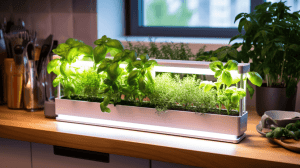
I’ve found that using fluorescent lights can be a good idea for your own herb garden, particularly because they provide a full spectrum of light. This is important because it closely mimics sunlight, which is ideal for growing plants. The most commonly used fluorescent bulbs are T5 and T8 tubes, which are energy-efficient and emit little heat. This means that you can safely keep the lights close to your plants without risking damage.
LED Grow Lights
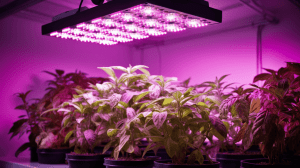
LED grow lights have become my preferred option for my indoor herb garden. They are energy efficient, long-lasting, and can cover a wide range of the light spectrum. Many LED lights on the market are designed specifically for plant growth, offering customizable features that cater to various stages of plant development. One of the best LED grow lights I’ve used is the EZORKAS 4-Arm Flexible Grow Light, as it offers nine dimmable modes and three cycle timing modes.
UV Lights
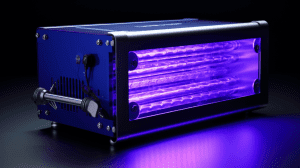
Adding UV lights to your indoor herb garden’s lighting system can also be beneficial, as ultraviolet light helps stimulate growth and improve the flavor of herbs. While not a standalone option, UV lights are a great supplementary light source for plants that receive some sunlight from a window or when combined with fluorescent or LED lights. It’s important to research the correct balance of UV light needed for your specific herbs, as excessive exposure can be damaging.
Window Sill Light
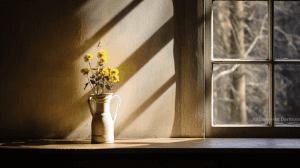
If you have a sun-splashed window, it might be the perfect choice for growing herbs indoors without any artificial lighting. Most herbs require at least 6 hours of sunlight per day, so ensure your window receives enough light throughout the day. For those with limited natural light, I would recommend combining window sill light with another light source like LED grow lights or fluorescent bulbs.
With the right lighting solution in place, you can successfully grow a variety of herbs indoors, adding a touch of freshness and flavor to your cooking.
Handy Tips for Indoor Herb Growing
Choosing the Right Herbs
When it comes to starting my own herb garden indoors, I know it’s essential to choose the proper herbs that can adapt to an indoor environment. In general, Mediterranean herbs like rosemary, thyme, and oregano do well indoors. Mint plants and perennial herbs such as lemon balm are also great choices. Whether I start my garden from seed packets or purchase starter plants from stores like Home Depot, selecting the best herbs is an essential first step.
Proper Watering

Watering is a crucial factor in growing healthy indoor herbs. I’ve found that using a self-watering system or a pot with a water reservoir can be very helpful in maintaining consistent moisture levels. It’s important not to overwater or underwater my herbs, as it can lead to root rot or dehydration. Checking the soil’s moisture and following the specific watering needs of each herb type will ensure their healthy growth.
Ideal Soil Mix
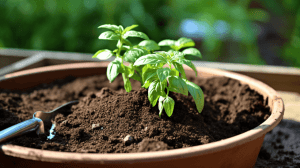
Another significant aspect of indoor herb gardening is selecting the right soil mix. I recommend using a potting mix specifically formulated for indoor plants instead of garden soil. Garden soil may be too heavy and may not provide the proper nutrients or drainage needed for indoor herbs. A well-draining soil mix will prevent waterlogging and promote healthy root growth, thus helping my herbs to thrive.
The Benefit of Drainage Holes
Providing the right drainage for my indoor herb garden is crucial. To ensure good drainage, I prefer using pots or containers with drainage holes. Placing my herbs on a window sill or other well-lit area, I also use a saucer or tray to catch excess water that drains from the pot. This not only helps with managing excess moisture but also prevents any damage to surfaces from standing water.
I’ve found that by following these tips and providing my indoor herbs with a good grow light such as a UV light, I can successfully maintain a flourishing indoor herb garden. With proper care and attention, my herbs can continue to grow year-round, providing me with fresh, flavorful additions to my meals.
Advantages of Indoor Herb Gardens
Growing herbs indoors is a great way to enjoy fresh and flavorful plants all year round. As someone with experience cultivating an indoor herb garden, I can confidently say that it’s an excellent addition to any home.
One of the most significant benefits of having an indoor herb garden is the ability to grow small plants in a relatively small space. Even if you only have a square foot or two of space, you can still create a thriving garden. Whether on a sunny windowsill or a south-facing window, you can make the most of limited space and still harvest your own fresh herbs for cooking.
Another advantage to an indoor herb garden is that you can control the environment for the best results. In my own herb garden, I’ve found that keeping the temperature between 65-75°F and providing ample ventilation can prolong the growing season and promote healthier plants. By having complete control over the growing conditions, it is easier to ensure that your plants thrive, even when outdoor conditions may be suboptimal.
A windowsill herb garden can also be an attractive addition to your décor. With a variety of herbs available, you’ll have an eye-catching and functional decoration for your home. In my personal experience, guests are often impressed with the lush, green look of the herbs and their pleasant aromas.
Finally, having access to fresh herbs in your home encourages healthier eating habits. As someone who loves to cook, I find that I am more likely to incorporate herbs into my recipes when they are right at my fingertips. It’s a convenient and cost-effective way to enhance the flavor and nutritional value of your meals.
In conclusion, maintaining an indoor herb garden provides numerous benefits, including an extended growing season, space-saving options, aesthetic appeal, and healthier eating habits. With careful attention to detail and a sunny windowsill, you can have a thriving garden all year round.
Indoor Herb Garden Kits
Compact Size Kits
When it comes to growing herbs indoors, I found that compact size kits are perfect for small spaces or windowsills. I particularly liked the Walford Home Farmhouse Indoor Herb Garden Planter, which has three deep pots and a rustic farmhouse style. Its size is perfect for fitting on a windowsill or countertop without taking up much space.
Self-Watering Systems
I noticed that many indoor herb garden kits come with a self-watering system, making it easier to maintain your herbs. One such example is the Amazing Creation Vertical Garden Planter, which includes a drip irrigation system to ensure your herbs receive enough water without any hassle. With this feature, I don’t have to worry about watering the plants manually, and it helps to prevent over or under-watering.
Smart Garden Kits
For those of us who want to take indoor gardening to another level, smart garden kits are a great choice. One outstanding smart garden kit I found is the Click & Grow Smart Garden 9. This indoor garden kit has a full spectrum of light, thanks to its adjustable LED lighting system, ensuring your herbs receive the appropriate amount of light throughout the day. The smart garden also has a built-in self-watering system for easy maintenance. As a bonus, the Click & Grow system offers a variety of pre-seeded plant pods, making it simple for me to try new herbs or plants whenever I want.
In summary, selecting the right indoor herb garden kit depends on your needs and preferences. Compact size kits, such as the Walford Home Farmhouse planter, are perfect for small spaces. Self-watering systems, like the Amazing Creation Vertical Garden Planter, help maintain your herb garden with ease. And, the Click & Grow Smart Garden 3 takes indoor gardening to a new level with its full spectrum of light and self-watering system.
Frequently Asked Questions
What type of grow light is best for herbs?
In my experience, LED grow lights are the most effective and energy-efficient option for growing herbs indoors. These lights provide the necessary wavelengths for optimal growth and can be customized to suit specific needs. Some of the best LED grow lights for indoor herbs can be found here.
How many hours of light do indoor herbs need?
Most herbs grow well with 12 to 14 hours of artificial light each day. It’s essential to provide adequate lighting for your indoor herb garden to ensure steady growth and prevent leggy, weak plants. A timer can be helpful to manage light schedules for your herbs, as suggested by The Family Handyman.
Are full spectrum LEDs effective for growing herbs?
Yes, full spectrum LED lights are effective for growing herbs indoors. These lights mimic sunlight by providing a balanced range of wavelengths, ensuring your herbs get the essential light they need for photosynthesis and growth. Better Homes & Gardens also recommends supplementing natural light with an LED grow light for optimal results.
What color temperature is ideal for herb growth?
The ideal color temperature for herb growth falls within the range of 5000K to 6500K. This range offers a balanced mix of blue and red wavelengths, promoting both vegetative growth and flowering in most herbs. It’s important to choose a grow light with the appropriate color temperature to support your plants’ growth stages.
How do I choose the right grow light intensity?
When selecting grow light intensity for your indoor herb garden, it’s crucial to consider the type of herbs you’re growing and their individual light requirements. Typically, light intensity is measured in units called photosynthetic photon flux (PPF) or foot-candles. According to UMN Extension, medium light intensity (250-1,000 foot-candles or 150-250 umol m-2s-1) is suitable for most herbs. Ensure your chosen light allows for adjustments in intensity to meet the needs of your plants.
Can I use a regular LED bulb instead of a grow light?
While it may be tempting to use a regular LED bulb, grow lights are specifically designed to provide the proper spectrum of light that plants need for optimal growth. Regular LED bulbs may not offer the correct balance of blue and red light wavelengths necessary for healthy growth. It’s recommended to invest in specialized LED grow lights for the best results when growing herbs indoors.


